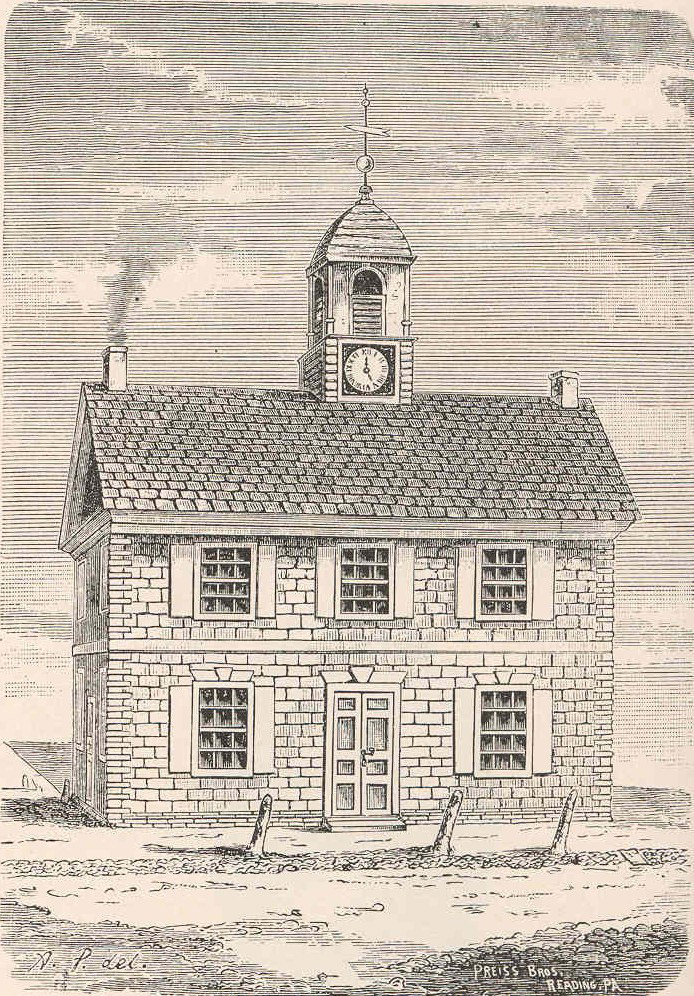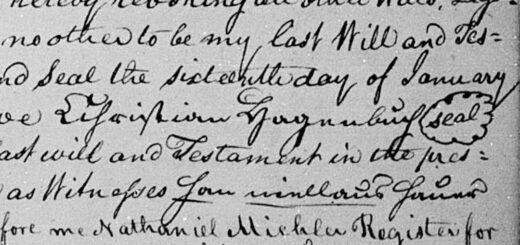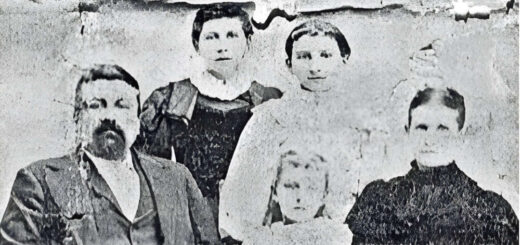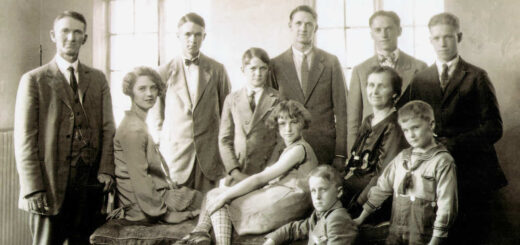Andreas Hagenbuch in Court
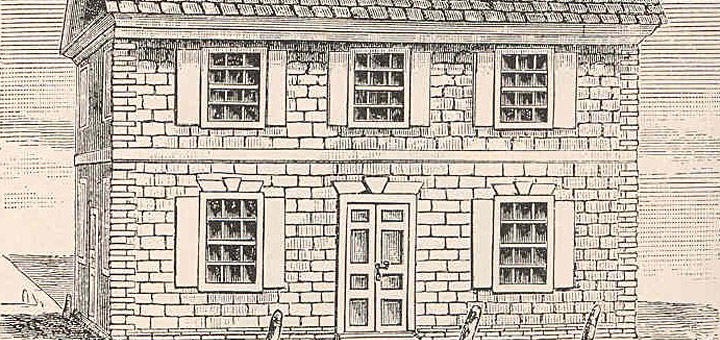
Piecing together family history is rarely a simple task. The further one goes back through time, the less there is to work from. Memories fade, photographs are lost, and documents are destroyed.
Precious little exists from the time of Andreas Hagenbuch (1711 – 1785). Most of the early Hagenbuch history has been assembled from cemeteries, birth and baptism certificates, wills, land warrants, tax lists, and census records.
Another great resource is the Pennsylvania Archives. Composed primarily of government documents, the Archives hold a plethora of information from the state’s early history. One document found there provides a glimpse into Andreas Hagenbuch’s whereabouts in the fall of 1769.
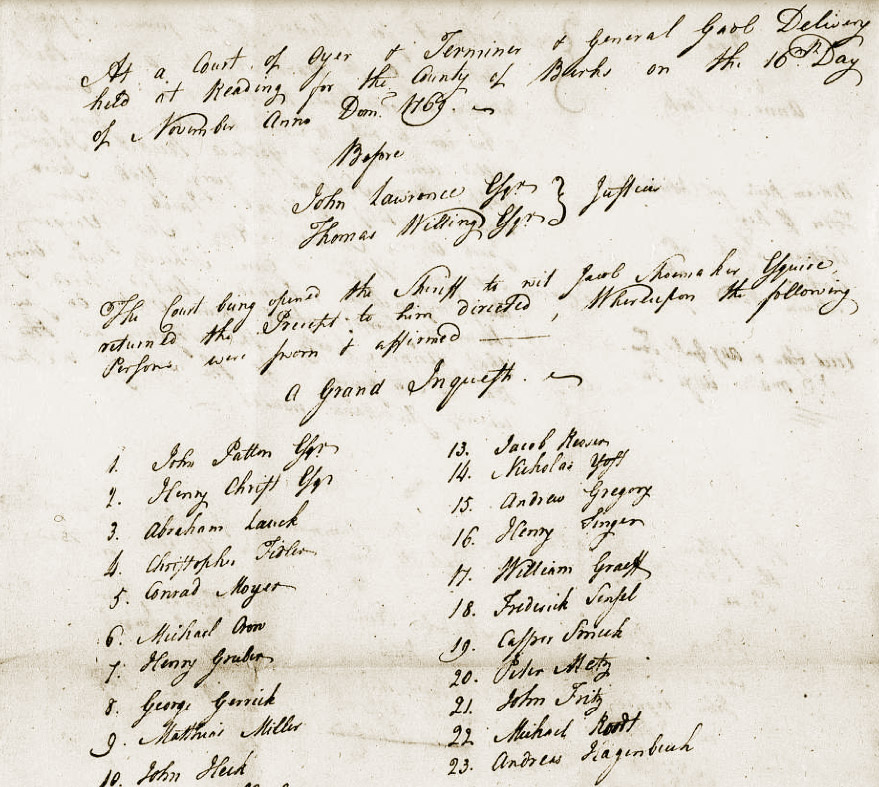
Portion of the document recording the grand jury indictment of Thomas Porter in 1769. Andreas Hagenbuch’s name is in the lower right. Credit: Pennsylvania Archives
The above document records the indictment of Thomas Porter for burglary. Along with the customary legal jargon of the day, the indictment lists the individuals present on the grand jury. One of the jurors is none other than Andreas Hagenbuch.
Using this document, it is possible to know that Andreas Hagenbuch was at the Berks County Courthouse in Reading, Pennsylvania on Thursday, November 16, 1769. The courthouse was new, having only been built a few years prior in 1762.
Reading is around 30 miles from the Hagenbuch homestead in Albany Township, Berks County. Today, it takes less than an hour to make the journey by car. However, in the 18th century it likely took Andreas around a day and a half to get there.
Andreas was 58 in 1769, and he almost certainly traveled to Reading with a companion. This may have been one of his sons, such as Henry. One can theorize about the route they followed.
The Hagenbuch homestead is located near Maiden Creek. An 1822 map of Pennsylvania by John Melish shows a road following Maiden Creek south to where it empties into the Schuylkill River. Andreas may have followed this road to the Schuylkill, then gone south for another five miles to Reading.
Such a journey would have required an overnight stop, possibly at a tavern along the way. A probable location for this stopover is Moselem Springs, located about halfway between the homestead and Reading. Moselem Springs appears on several early Pennsylvania maps. These note the location of a church, mill, and forge in the vicinity.
In Reading, Andreas Hagenbuch served on a grand jury of 23 men, who decided to bring charges against Thomas Porter. According to the November 30, 1769 issue of The Pennsylvania Gazette, Porter had gained some notoriety as a criminal. An article in the paper describes how on October 3rd, while being held on suspected burglary charges, Porter escaped prison in Reading. He was later indicted by the grand jury on November 16th. Unfortunately, the story goes cold from there, and it’s unclear if he was ever captured, tried, and convicted.
Below is the text of the indictment proceedings as recorded in the Pennsylvania Archives:
At the Court of Oyer & Terminer1 & General Jail. Delivery held at Reading for the County of Berks on the 16th Day of November in the year of the Lord, 1769.
Before Justices: John Lawrence, Esquire, and Thomas Willing, Esquire
The Court burg2 opened the Sheriff to witness Jacob Shoemaker, Esquire, returned the Precept3 to him directed. Whereupon the following persons were sworn and affirmed:
A Grand Inquest:
John Patton, Henry Christ, Abraham Lauck, Christopher Fidler, Conrad Moyer, Michael Crow, Henry Gruber, George Gerrick, Mathias Miller, John Heck, Benedict Kepler, Adam Gerratt, Jacob Reeser, Nicholas Yost, Andrew Gregory, Henry Singer, William Graeff, Frederick Sensel, Casper Smeck, Peter Metz, John Fritz, Michael Roodt, Andreas Hagenbuch
The King vs. Thomas Porter
Indictment for a Burglary. Returned by the Grand Inquest a true Bill4. Process awarded.
The historical record is often incomplete. Luckily, on occasion a shred of evidence is discovered that opens a window into the past. The indictment of Thomas Porter is one such window, revealing the travels of Andreas Hagenbuch and helping to tell the story of the early Hagenbuch family in America.
Notes:
- Oyer and Terminer courts were part of the English system of law and found in the Pennsylvania Colony. They used grand juries to determine if offenses should be tried by the court.
- “Burg” is likely being used to describe the fortified place where the court and jail were located.
- “Precept” refers to the writ containing the indictment.
- Grand juries who believed there was evidence of a crime committed would return a “true bill.” Otherwise, “no bill” was returned.

